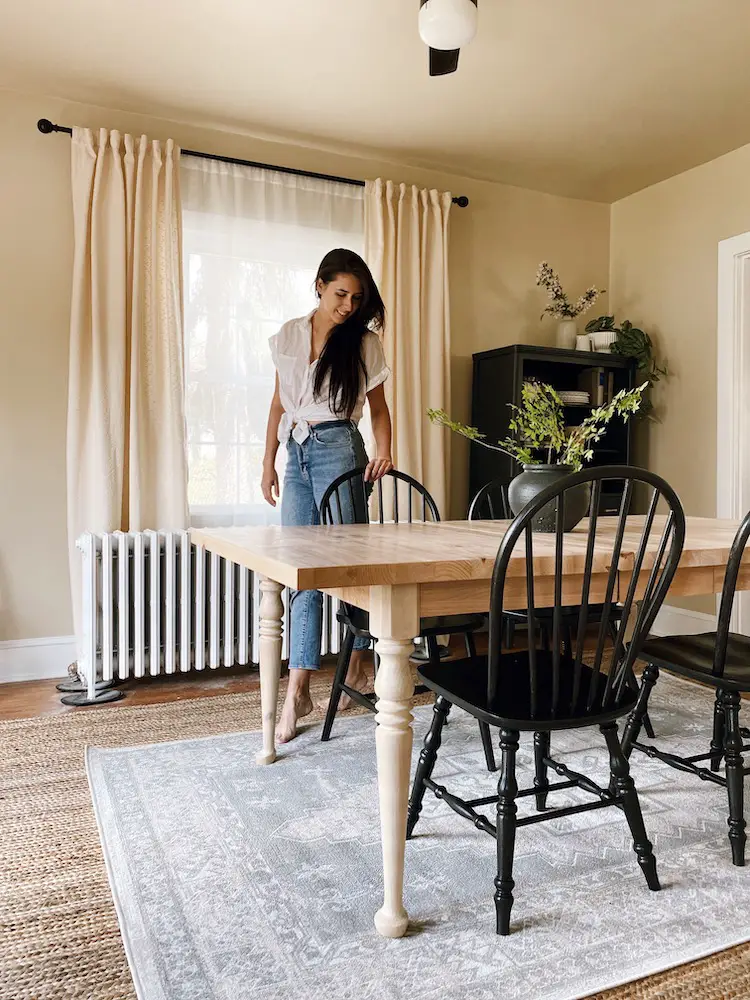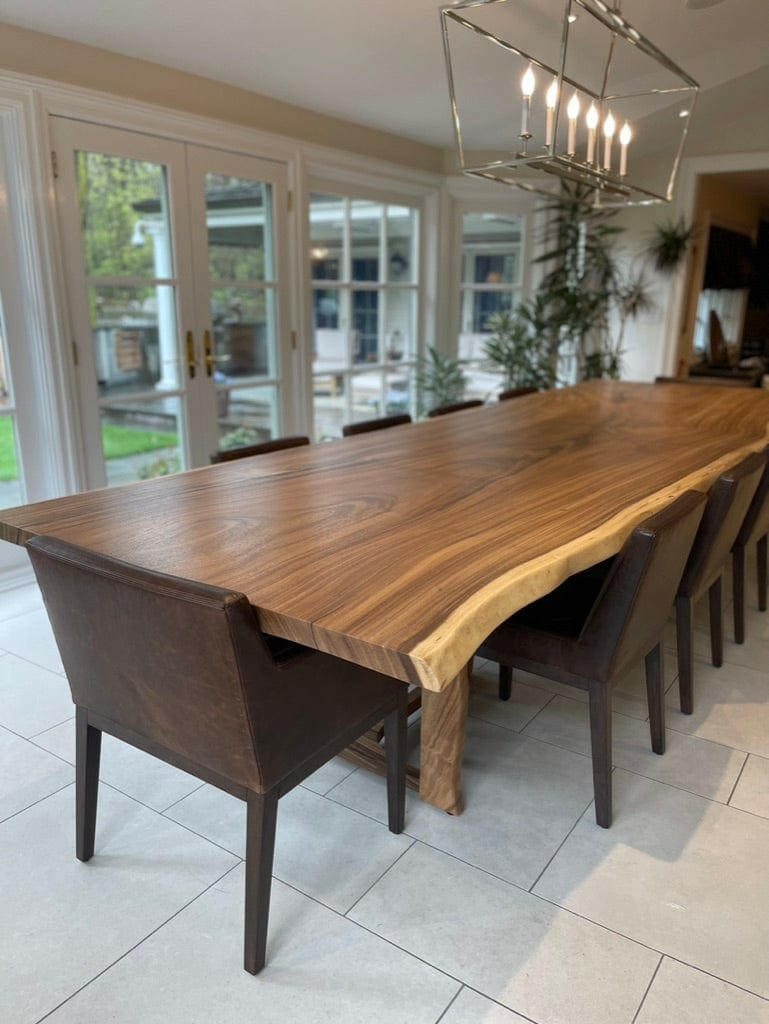Dining Room Table Legs: What to Consider Before You Buy
Dining Room Table Legs: What to Consider Before You Buy
Blog Article
Choosing the Perfect Table: What Styles Work Best for Your Home?
Selecting the excellent table for your home can be a nuanced procedure that balances aesthetics and capability. Whether your space leans in the direction of conventional elegance, contemporary minimalism, rustic charm, or commercial stylish, the selection of styles readily available can accommodate varied preferences. Each style supplies distinct advantages and challenges that can either boost or disrupt your dining location's harmony. Recognizing how various products, shapes, and dimensions interact with your existing design is crucial. To browse these choices successfully and find a table that truly complements your home, consider the complying with facets carefully.
Evaluating Your Area
Reviewing the dimensions and layout of your dining area is a critical primary step in selecting the ideal dining table. Begin by determining the length and size of the space, making up entrances, home windows, and various other building attributes that could influence table placement. This ensures that your table not only fits but also enables comfortable movement around it.
Consider the number of individuals you typically entertain. A table should accommodate your household's daily demands while supplying enough adaptability for periodic guests. As a guideline of thumb, assign a minimum of 24 inches of table width each to make certain a comfy eating experience.
It's likewise important to maintain appropriate clearance around the table. Preferably, there must be at least 36 inches in between the table side and walls or other furnishings, allowing easy access and activity. For areas where chairs with arms or additional storage space systems like buffets are included, increasing this clearance to 48 inches is suggested.
Lights and environment play significant duties also. Make sure that your table straightens with existing illumination fixtures or prepare for sufficient lights options. This comprehensive spatial analysis assurances that your eating table not only fits literally however additionally balances with your room's general functionality and visual.
Popular Table Styles

Conventional table often feature luxuriant information, rounded legs, and abundant wood coatings, evoking a sense of classic sophistication. They are best for homes with traditional design or those wanting to add a touch of sophistication to their eating location.
Modern dining tables prioritize simpleness and clean lines, typically incorporating materials like glass and steel. These tables are suitable for contemporary spaces, giving a smooth and clean look that enhances minimalist design ideologies.
Rustic eating tables, on the other hand, stress natural materials and a handmade appearance - dining room table legs. They often include reclaimed timber and a distressed finish, producing a warm and welcoming environment. These tables function well in farmhouse-style homes or those seeking a cozy, natural feel
Industrial eating tables combine basic materials such as metal and timber, typically showcasing a practical aesthetic. This design is appropriate for loft spaces or metropolitan rooms, including a touch of rugged beauty and sturdiness to the eating experience.
Each style supplies distinct benefits, making it vital to pick click to find out more one that aligns with your home's general design and your personal choices.
Material Options
When picking a dining table, the option of product plays a vital role in identifying both the table's aesthetics and performance. Timber, metal, glass, and composite materials each deal one-of-a-kind benefits and difficulties, making it essential to line up the product with your home's decor and lifestyle requirements.
Timber is a timeless and versatile choice, readily available in varieties such as oak, walnut, and mahogany. Known for its toughness and heat, timber complements both conventional and contemporary insides. Nonetheless, it calls for regular maintenance to avoid scratches and bending.
Metal tables, frequently crafted from stainless steel, light weight aluminum, or wrought iron, are commended for their modern allure and robustness. They are particularly matched for industrial or minimalist settings however can be susceptible original site to dents and may feel chilly to the touch.
Glass table bring an air of sophistication and visibility, suitable for smaller areas as they create an illusion of more room. While very easy to tidy, glass can be at risk to spots and calls for cautious dealing with to prevent chips and fractures.
Composite materials, such as MDF and plywood, offer cost-effective and personalized remedies, though they might do not have the durability of natural products. Picking the ideal product ensures your table is both a useful property and a visual delight.
Forming and Dimension Considerations
After identifying the ideal more info here material for your eating table, the next factor to consider is selecting the ideal shape and dimension to match your area. Alternatively, round tables cultivate a sense of intimacy and are superb for smaller eating areas, motivating discussion by eliminating edges and making every person feel similarly consisted of.
As a guideline of thumb, assign at least 24 inches of table width per person to guarantee comfortable dining. Additionally, consider the table's clearance space: there should be at least 36 inches in between the table side and the wall surfaces or various other furniture. Prolonging tables provide flexibility if you frequently host bigger celebrations, giving added seating when needed without occupying added room daily.
Matching Your Style
Selecting an eating table that integrates with your existing design is crucial in producing a natural and inviting area. A streamlined, minimalist table with clean lines is excellent for a contemporary home, while a vintage, luxuriant table suits a much more typical setting.
Shade and product are equally considerable. If your style features warm tones and all-natural products, consider a wooden table to improve the natural feeling. Conversely, a glass or metal table might be better suited in an area controlled by cool colors and commercial components. Take note of the finish, as it ought to mirror various other furnishings and components to keep consistency.
A rough-hewn, redeemed timber table can add character to a rustic area, while a sleek marble surface can elevate an elegant dining location. A well-matched dining table not only boosts aesthetic appeal yet additionally enhances the overall eating experience.

Verdict
Selecting the perfect dining table necessitates careful consideration of space, style, materials, form, and dimension. Typical tables enhance timeless insides with rich wood finishes, while modern tables suit modern setups via glass and metal.
Report this page